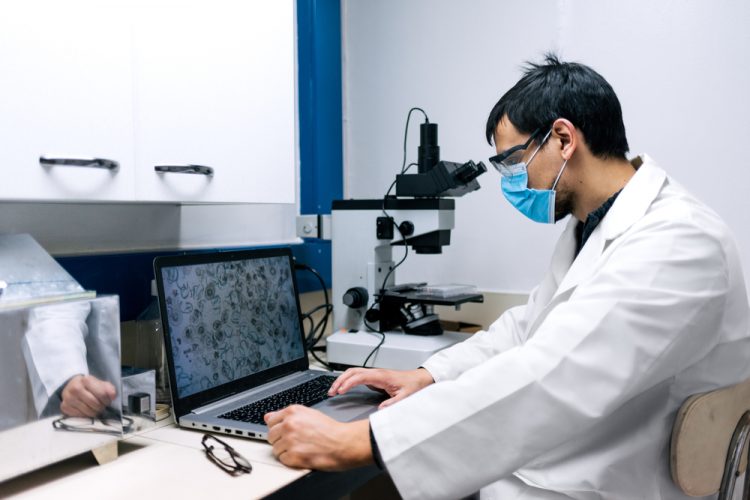Label-free technique could revolutionise tissue analyses
Posted: 2 November 2021 | Anna Begley (Drug Target Review) | No comments yet
A new high-resolution virtual microscopy technique enables the rapid visualisation of tissue, paving the way for histopathology analysis during surgery.


Researchers from the University of Alberta, Canada, have developed a way to produce high-resolution virtual microscopy images that allow detailed visualisation of tissue without time-consuming staining procedures. According to the team, this approach is an important step toward the ability to perform histopathology analysis during surgery, rather than waiting days for results.
NEWS: Novel label-free exosome profiling method shows success at detecting cancer – READ HERE
“In traditional histology, the cell nuclei and cytoplasm are differentiated by applying stains known as haematoxylin and eosin, commonly referred to as H&E,” explained research team leader Roger Zemp. “Our virtual histology approach produces high-resolution nuclei and cytoplasm imaging with colourisation that closely matches traditional H&E staining approaches.”
The new imaging method, detailed in Optic Letters, builds upon the team’s previous work in which they successfully extracted cell nuclei information from tissue samples using ultraviolet light. However, replacing traditional histology with a virtual version requires a way to view both the cell nuclei and cytoplasm.
Drug Target Review has just announced the launch of its NEW and EXCLUSIVE report examining the evolution of AI and informatics in drug discovery and development.
In this 63 page in-depth report, experts and researchers explore the key benefits of AI and informatics processes, reveal where the challenges lie for the implementation of AI and how they see the use of these technologies streamlining workflows in the future.
Also featured are exclusive interviews with leading scientists from AstraZeneca, Auransa, PolarisQB and Chalmers University of Technology.
The researchers combined pulsed ultraviolet and non-pulsed near-infrared light. The combination provides images that contain details about both the cell cytoplasm and the cell nuclei, making it possible to produce high-resolution virtual histology images without requiring any staining. The approach also improves the resolution of cytoplasm images by a factor of five, which gives the cell nuclei and cytoplasm a uniform resolution in the virtual histology images.
“The near-infrared reflectivity reveals information about the cell cytoplasm background,” elaborated first author Nathaniel Haven. “When pulsed ultraviolet light is coupled into the system, it is absorbed by cell nuclei in a way that causes sharp changes in the near-infrared reflectivity and allows cell nuclei details to be extracted from the cell cytoplasm background. The ultraviolet beam can also be manipulated to provide reflectivity information that can be used to generate cytoplasm detail at much higher resolutions than is possible with just the near-infrared beam.”
Currently, using nanosecond-pulsed ultraviolet light to measure reflectivity at a single point on a sample is difficult. To overcome this issue, the researchers used a custom peak detector circuit that holds the peak value of the reflectivity measurement so that it can be adequately sampled. They also developed a colourmap matching algorithm that applies realistic colours to the virtual images, making it intuitive for surgeons to interpret the images in real time.
To demonstrate their technique, they compared virtual histology images of samples from human breast lumpectomy with traditional histology. The results showed that virtual H&E images of unstained tissues closely resembled true H&E-stained sections. They also assessed the preliminary diagnostic utility of the virtual approach by having a pathologist note diagnostic features of interest in the virtual images.
“The feedback we received from the pathologist was positive,” said co-author Matthew Martell. “If future validation studies are successful, we think that this approach could one day replace traditional histopathology in time-sensitive applications such as point-of-care biopsy analysis and cancer surgery.”
Related topics
Analytical techniques, Imaging, Label-free, Microscopy, Technology
Related organisations
University of Alberta
Related people
Matthew Martell, Nathaniel Haven, Roger Zemp



